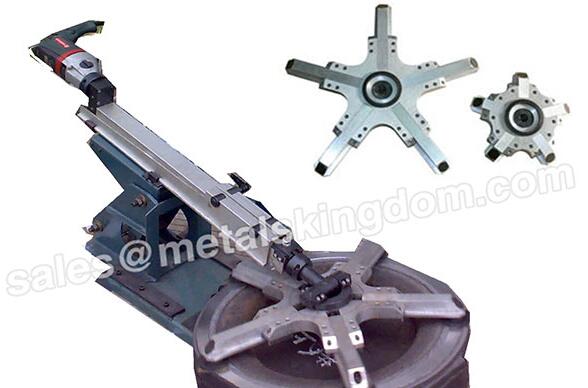Valve grinding machines are essential tools in the automotive and industrial sectors, used to ensure the precise resurfacing of valves for optimal engine performance. Accuracy is a critical factor in valve grinding, as it directly affects engine efficiency, power output, and longevity. This article explores how accurate a valve grinding machine can be, the factors influencing its accuracy, and why precision is so important in valve maintenance.

Precision in Valve Grinding
Valve grinding machines are designed to restore the flatness and smoothness of valve faces and seats, which are crucial for maintaining an airtight seal in the combustion chamber. The accuracy of these machines is typically measured in microns (one-millionth of a meter), with most modern machines capable of achieving tolerances within a few microns. This level of precision ensures that the valve seats perfectly against the cylinder head, preventing leaks that could lead to reduced engine performance or failure.
The precision of a valve grinding machine depends on several factors, including the quality of the machine itself, the skill of the operator, and the condition of the components being ground. High-quality machines are built with rigid, stable structures and precise control systems that minimize vibrations and other factors that could affect accuracy. Additionally, experienced operators who understand the nuances of valve grinding can achieve better results by carefully setting up and operating the machine.
Factors Affecting Accuracy
Several factors can influence the accuracy of a valve grinding machine, and understanding these can help in selecting the right equipment and ensuring optimal results.
Machine Quality
The quality of the valve grinding machine is the most significant factor in its accuracy. High-end machines are constructed with precision-engineered components, including hardened steel parts and advanced control systems, which allow for minute adjustments and consistent performance. These machines are designed to minimize deflection and maintain tight tolerances, even during prolonged use. Lower-quality machines, on the other hand, may suffer from issues such as poor alignment, inconsistent feed rates, or excessive vibration, all of which can reduce accuracy.
Operator Skill
The skill and experience of the operator also play a crucial role in achieving high accuracy with a valve grinding machine. Skilled operators understand how to properly set up the machine, adjust the grinding wheels, and monitor the process to ensure that the valve is ground to the exact specifications required. They are also adept at identifying and correcting any potential issues that could affect the outcome, such as uneven wear on the grinding wheel or improper clamping of the valve. An unskilled operator may not achieve the same level of precision, leading to suboptimal results.
Condition of the Valve and Seat
The condition of the valve and seat being ground also impacts the accuracy of the grinding process. Worn, damaged, or uneven surfaces can make it more challenging to achieve a perfectly smooth and flat finish. In some cases, the valve or seat may need to be replaced entirely if it cannot be ground to the required specifications. Additionally, the presence of dirt, oil, or other contaminants can interfere with the grinding process, further reducing accuracy. Ensuring that the components are clean and in good condition before grinding is essential for achieving the best results.
Importance of Accuracy in Valve Grinding
Accuracy in valve grinding is crucial for maintaining engine performance and longevity. An inaccurately ground valve can lead to poor sealing in the combustion chamber, resulting in reduced compression, loss of power, increased fuel consumption, and potentially severe engine damage over time. In high-performance or high-reliability applications, such as in racing engines or industrial machinery, the need for precision is even more critical, as even minor deviations from the optimal valve shape can have significant consequences.
Furthermore, accurate valve grinding extends the life of the valve and the engine as a whole. By ensuring that the valve seats properly and evenly, wear is minimized, and the risk of valve failure is reduced. This, in turn, helps to maintain consistent engine performance and reduces the need for costly repairs or replacements.
Conclusion
Valve grinding machines are highly accurate tools, capable of achieving precision within a few microns. The accuracy of these machines depends on several factors, including the quality of the machine, the skill of the operator, and the condition of the valve and seat. Ensuring that all these factors are optimized is essential for achieving the best possible results and maintaining engine performance.
If you need more information on valve grinding machines or require assistance in selecting the right machine for your needs, don't hesitate to contact us. We work with reputable suppliers to provide top-quality equipment that meets the highest standards of accuracy and reliability.
评论
发表评论